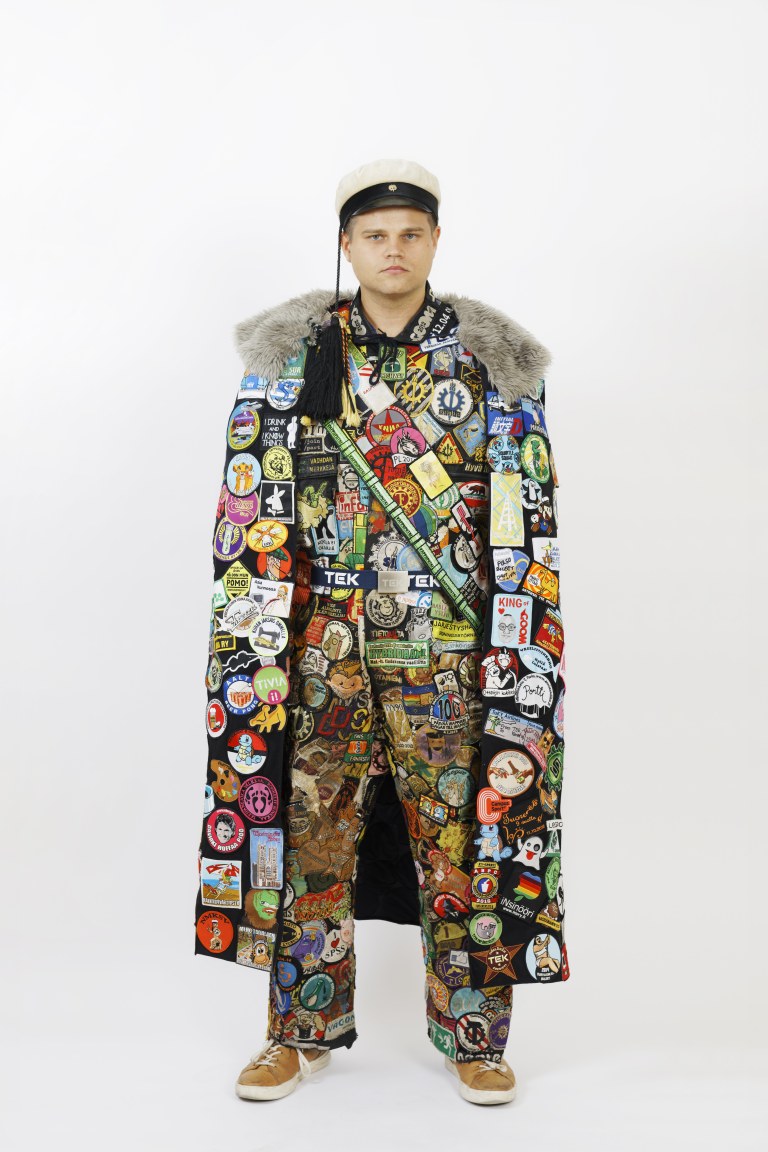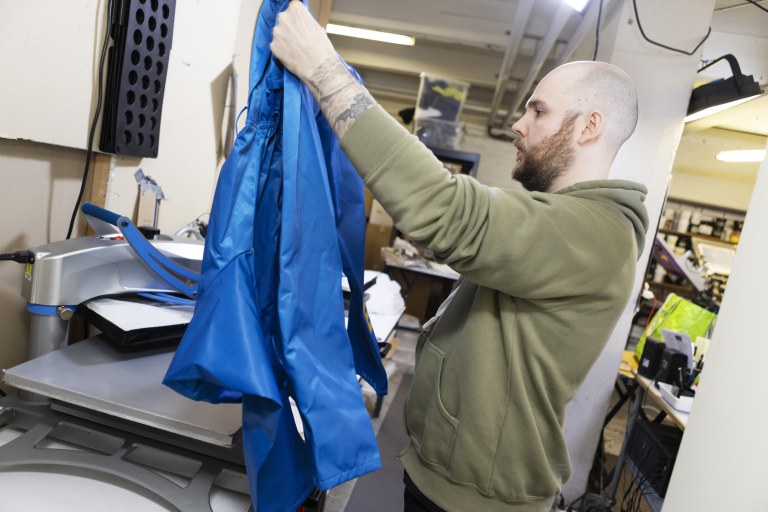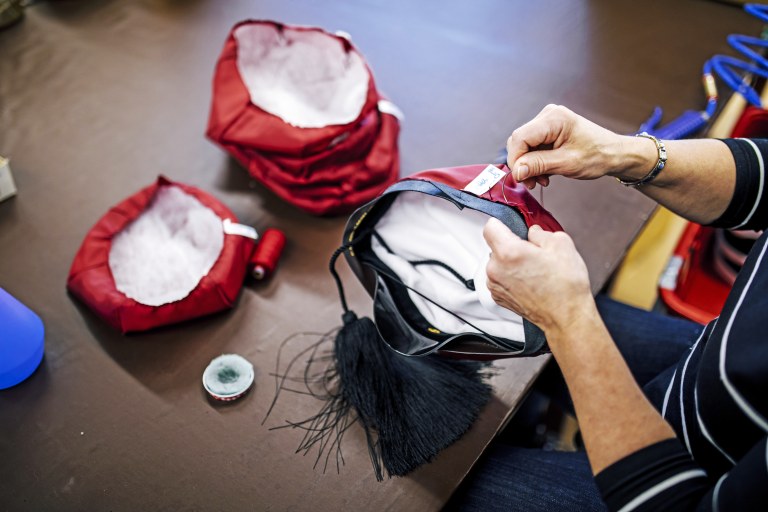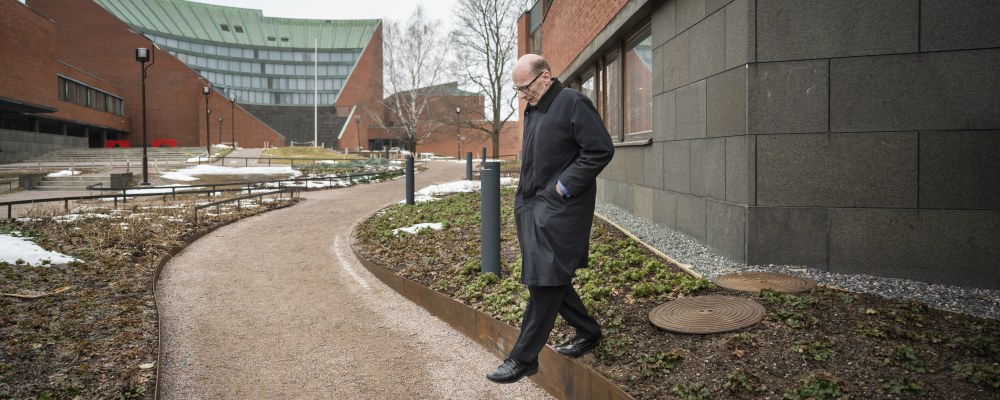
“This is a good story,” says Antero Hakapää, 82, excitedly. He shows a picture of an oil painting where eight young men are sitting at a round table in the Pokkamonttu meeting room of Vanha Poli.
The painting started out as a joke. It was commissioned by the group of friends depicted in the painting. They had all started studying at the University of Technology in 1959, forming the class of the Mining Industry Department. One of them was Hakapää.
In the fall of 1961, the group decided to start a society named Oopperan Ystävät (“Friends of Opera”), with the motto: “You’re a friend of opera until you go to the opera”. OoYy consisted of two sections: taken Ukkomiehet ("Married Men") and the singles’ Balettijaosto ("Ballet Section"). Balettijaosto once attended a costume party organized by Ateneum at Restaurant Kaisaniemi in Helsinki. It was there that they met a certain artist and decided to offer her a job.
“The deal was that she would invite each of us individually into her home studio and paint us into a fresco. All the members of Oopperan Ystävät agreed to write an essay on whatever happened at the studio. Not a single essay was handed in. That is all I can tell you,” says Hakapää.
Today, the painting can be seen at the Student Culture Museum in Espoo where Oopperan Ystävät donated it.
(The article continues below the image.)
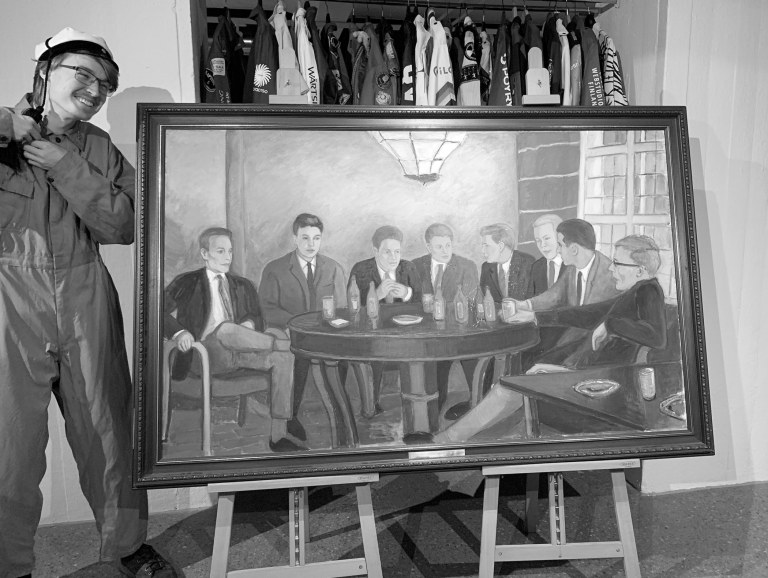
The secret society Oopperan Ystävät had been established a short time before the painting. It was born from a desire to learn more and to deepen and extend learning.
“You won’t believe this, but we were a class that wanted to learn more than a single professor could ever teach us in their lectures. We asked flagship companies in mining to grant an audience to eight respectable students of technology,” says Hakapää.
The companies accommodated the request. The first visit was made to a mine where one of the students had worked over the summer. The director of the mine allowed this student to invite their friends over for an excursion, a visit. Following the formal program, the students headed out after the night to seek further nourishment.
“The Pyynikki Brewery was up for the challenge. We got an extra boost of energy from the milk bar on Hämeenkatu. Masa started talking about how there was nothing happening in the world. We should come up with something, like start a society!”
The name Oopperan Ystävät comes from the film Some Like It Hot. The film was shown in theatres across Finland at the turn of the 60s, and the students were also familiar with the plot: a group of gangsters arrives at a hotel in Miami to a conference for “Friends of Italian Opera”. Oopperan Ystävät chose an upside-down G-clef as its symbol.
(The article continues below the image.)
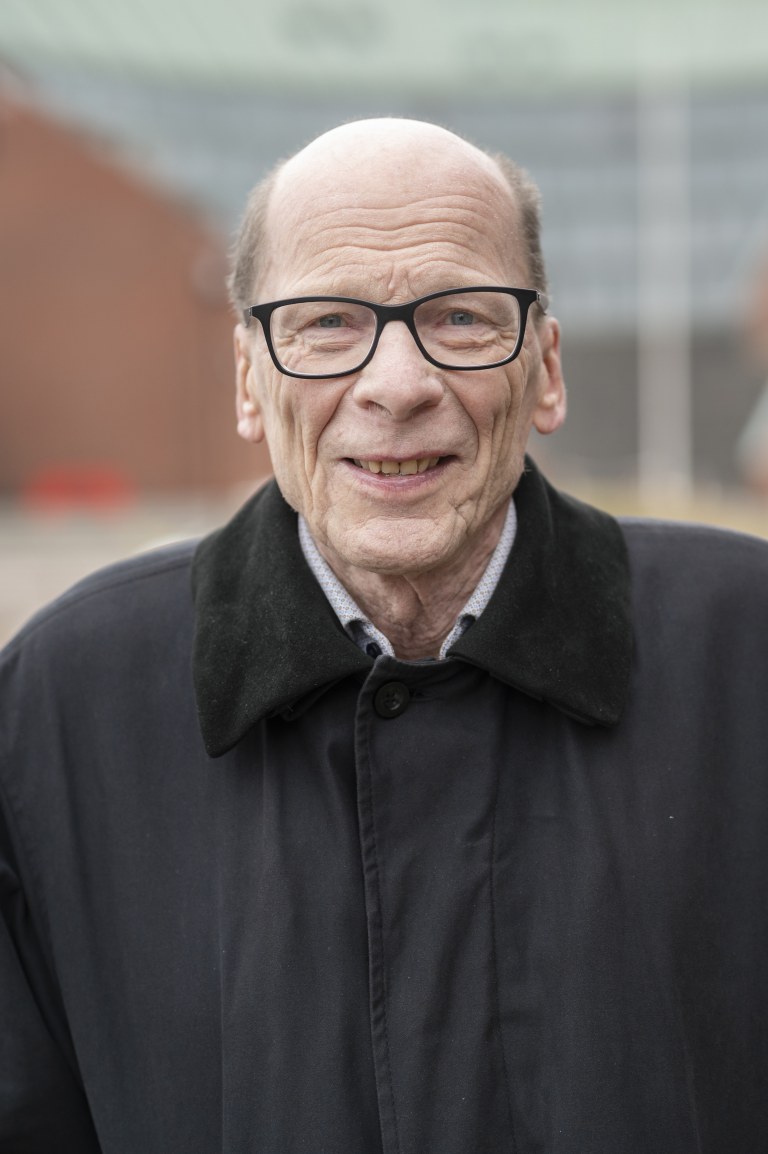
According to research done by the Student Culture Museum, Oopperan Ystävät was the first group in Finland to use student overalls as its uniform. As with so many ideas, the thought of overalls first came to the group during an evening together.
Erkki, a friend of OoYy, was a sales representative for the clothing manufacturer Tiklas. In the fall of 1962, Erkki and Balettijaosto were enjoying a sauna evening together with some friends. Hakapää and the other members of Oopperan Ystävät who were present said that they wished their society had a uniform. Towards the end of the evening, Erkki had an idea. Already in the following week, Oopperan Ystävät received pale green course overalls with the logo of Tiklas proudly blazoned on the back.
Only two of the original eight overalls still remain to this day. They are on display at the Student Culture Museum in Espoo. The overalls look simple compared to the overalls worn by students today, which are covered in colorful patches.
“You can see the two worn, washed-out overalls at the museum. Helmets were also part of the uniform. It was a miner’s outfit,” says Hakapää.
Starting from fall 1962, Oopperan Ystävät would wear their overalls as a uniform whenever they made congratulatory visits and went on excursions.
In 1963, Oopperan Ystävät took a trip to France with the Guild of Materials and Metallurgy Students. When the 27 other students headed back to Finland from Paris, Oopperan Ystävät continued their journey to London and took the train to Cornwall in South West England. Not only was Cornwall home to a thriving mining industry and the Camborne School of Mines, but the society also knew people at a local mining company.
After the excursion, Balettijaosto continued from London to do internships in Mediterranean countries. Ukkomiehet boarded a passenger ship headed for Helsinki.
“I was in Balettijaosto, but from what I heard, one of Ukkomiehet was almost forgotten aboard the ship. The group had made the most of the ship's bar before the ship docked. Luckily, the rest of Ukkomiehet managed to get this one guy off the ship before it continued its voyage to Leningrad!”
After all these years, Oopperan Ystävät still continues to meet on a regular basis. Only five of the original eight members remain. They enjoy a Christmas lunch at Salve, a restaurant on Hietalahdenranta in Helsinki, near the former main building of TKK. One of the traditions of the event includes an inspection of the old fresco, and bowing to the painting.
The Student Culture Museum borrows the fresco for the lunch.
